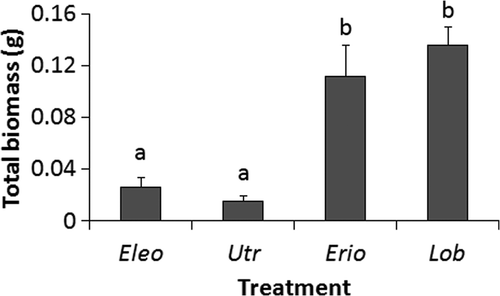Figures & data
Figure 1. Mean (n = 8; +SE) redox potentials (mV) at sediment depths of (a) 2, (b) 4, and (c) 6 cm in Big Moose or Raquette substrate in a greenhouse experiment. Eleocharis acicularis (Eleo), U. resupinata (Utr), E. aquaticum (Erio), and L. dortmanna (Lob) were planted in both sediment types, and each sediment type also had a bare sediment treatment. Treatments not sharing letters are significantly different (p < 0.05) within each depth as detected by (a, b) max-t tests or (c) Tukey's HSD test.
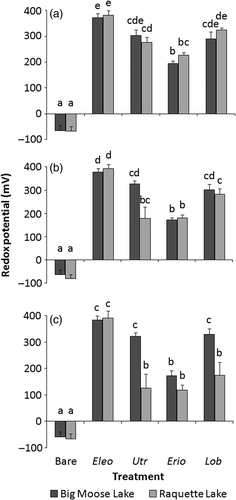
Figure 2. Mean (n = 8; +SE) sediment porewater pH values of samples collected using sediment porewater equilibrators in Big Moose or Raquette substrate in a greenhouse experiment. Eleocharis acicularis (Eleo), U. resupinata (Utr), E. aquaticum (Erio), and L. dortmanna (Lob) were planted in both sediment types, and each sediment type also had a bare sediment treatment. Treatments not sharing letters are significantly different (p < 0.05) as detected by max-t tests.
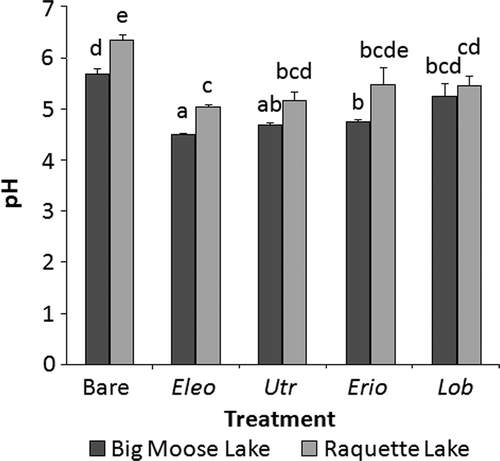
Figure 3. Mean (n = 8; +SE) total biomasses (g dry mass/86.5 cm2 pot surface area) of plants, including above- and belowground biomass, harvested from Big Moose or Raquette sediment in a greenhouse experiment. Eleocharis acicularis (Eleo), U. resupinata (Utr), E. aquaticum (Erio), and L. dortmanna (Lob) were planted in both sediment types. Treatments not sharing letters are significantly different (p < 0.05) as detected by Tukey's HSD test.
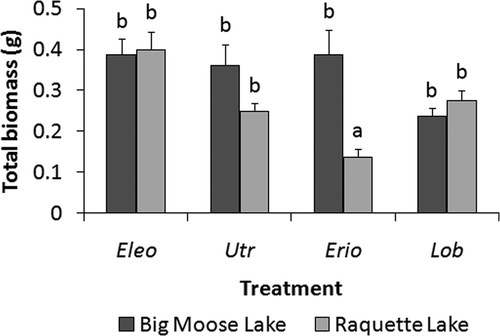
Figure 4. Mean (+SE) redox potentials (mV) measured at sediment depths of: (a) 2, (b) 4, and (c) 6 cm in sediment cores collected in a field study at Limekiln Lake. Measurements were taken in cores containing E. acicularis (Eleo), U. resupinata (Utr), E. aquaticum (Erio), or L. dortmanna (Lob). Treatments not sharing letters are significantly different (p < 0.05) within each depth as detected by max-t test (n = 6 for Bare and E. acicularis, n = 8 for others).
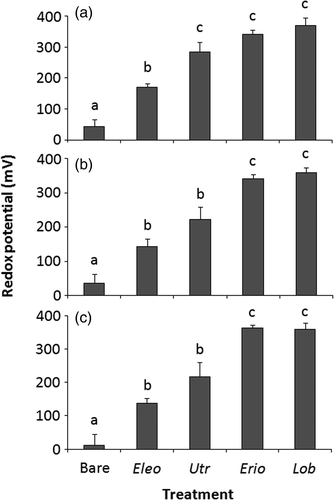
Figure 5. Mean (+SE) total biomasses (g dry mass/19.6 cm2 sediment core surface area) of plants, including above- and belowground biomass, collected in a field study at Limekiln Lake. Eleocharis acicularis (Eleo), U. resupinata (Utr), E. aquaticum (Erio), and L. dortmanna (Lob) were sampled. Treatments not sharing letters are significantly different (p < 0.05) as detected by Tukey's HSD test (n = 6 for Bare and E. acicularis, n = 8 for others).
